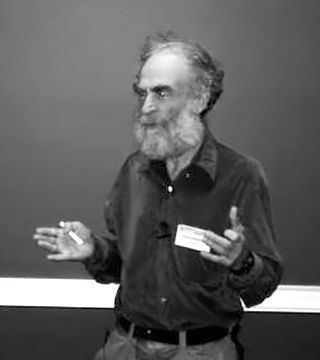Residence France Fields Mathematics Role Mathematician | Nationality Russian and French Name Mikhail Gromov Known for Geometry | |
 | ||
Born 23 December 1943 (age 81) Boksitogorsk, Russian SFSR, Soviet Union ( 1943-12-23 ) Institutions Institut des Hautes Etudes ScientifiquesNew York University Alma mater Leningrad State University (PhD) Doctoral students Denis AurouxChristophe BavardFrancois LabourieYashar MemarianPierre PansuAbdelghani Zeghib Education Saint Petersburg State University Doctoral advisor Vladimir Abramovich Rokhlin Awards Abel Prize, Wolf Prize in Mathematics, Nemmers Prize in Mathematics Books Metric Structures for Riema, Partial Differential Relations, Manifolds of Nonpositi, Mathematical slices of molecular Similar People Yakov Eliashberg, Simon Donaldson, Pierre Pansu, Niels Henrik Abel, Marcel Berger | ||
How to pronounce mikhail leonidovich gromov russian russia pronouncenames com
Mikhail Leonidovich Gromov (also spelled Mikhael Gromov or Michael Gromov; Russian: Михаи́л Леони́дович Гро́мов; born 23 December 1943), is a French–Russian mathematician known for important contributions in many different areas of mathematics. He is considered a geometer in a very broad sense of the word. In 2009 he was awarded the Abel Prize "for his revolutionary contributions to geometry".
Contents
- How to pronounce mikhail leonidovich gromov russian russia pronouncenames com
- Biography
- Work
- Prizes
- Honors
- Books and other publications
- References
Biography
Mikhail Gromov was born on 23 December 1943 in Boksitogorsk, Soviet Union. His father was Leonid Gromov and his mother was Lea Rabinovitz. Both his parents were pathologists. Gromov was born during World War II, and his mother, who worked as a medical doctor in the Soviet Army, had to distance herself from the front line in order to give birth to him. When Gromov was nine years old, his mother gave him the book Numbers and Figures, by Hans Rademacher and Otto Toeplitz, a book that piqued his curiosity and had a great influence on him.
Gromov studied for a doctorate (1973) in Leningrad, where he was a student of Vladimir Rokhlin. He is now a permanent member of IHES, and a Professor of Mathematics at New York University.
Work
Gromov's style of geometry features a "coarse" or "soft" viewpoint, often analyzing asymptotic or large-scale properties.
His impact has been felt most heavily in geometric group theory, where he characterized groups of polynomial growth and created, along with Eliyahu Rips, the notion of hyperbolic group; symplectic topology, where he introduced pseudoholomorphic curves, and in Riemannian geometry. His work, however, has delved deeply into analysis and algebra, where he will often formulate a problem in "geometric" terms. For example, his homotopy principle (h-principle) on differential relations is the basis for a geometric theory of partial differential equations.
Gromov is also interested in mathematical biology.
